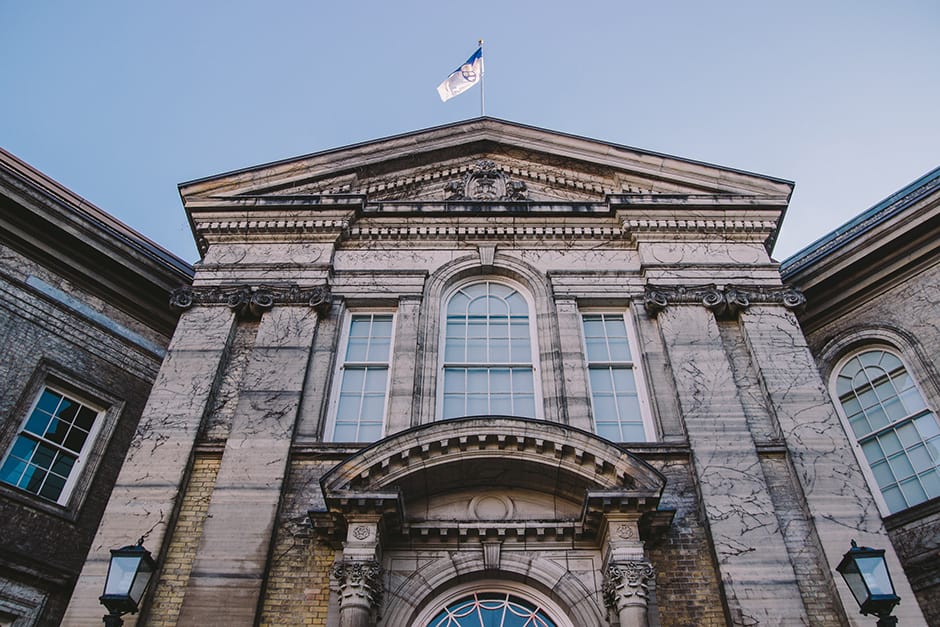After several months of investigation into the Dalhousie University Dentistry scandal, a detailed report produced at the conclusion of a restorative justice process has been released. As U of T strives to change its own campus culture regarding sexual assault and harassment, the Dalhousie report may offer pivotal insights.
The 72-page report was released with a caveat: “restorative justice process could not, of course, offer final or comprehensive solutions to these issues. No single process could… [however] the participants felt it was important to provide this report on their process to the wider community to share what they have learned in the hope it may be of benefit to building safer and more inclusive communities in the future.”
The report focuses on the toxic campus culture that underlay the actions of Dalhousie students for years, but had never been properly addressed. It reveals that the Dalhousie Dentistry scandal was not at all in isolation, but did in fact “speak to a part of the culture at the Faculty and in this profession,” and is not uncommon in other universities.
The scandal
In mid-December 2014, a private Facebook group comprised of 13 male fourth-year Dalhousie Faculty of Dentistry students was revealed to have included misogynistic, sexist, and homophobic comments. Several female students formally reported the group to the administration in accordance with the university’s Code of Student Conduct. Dalhousie responded by temporarily suspending the students from clinic duty and initiating an investigation and restorative justice process, which would continue for five months.
As the restorative justice process took place internally, many members of the public and various media outlets criticised what they saw to be a passive approach towards reprimanding the students in on the part of the university administration.
“Many felt the issues around the Facebook incident were black and white — a group of students did a terrible thing and should be expelled,” reads a portion of a statement released by Dalhousie’s administration. “First and foremost we are educators. Punitive measures such as expulsion do not change attitudes or positively influence future behaviour, nor do they address underlying systemic problems.”
In fact, “underlying systemic problems” were exactly what was revealed. A law professor, a member of Security Services, and an advisor from the Office of Human Rights, facilitated the extensive restorative investigation, which involved interviews and discussions on both individual and group bases with nearly the entire fourth-year dentistry class and several faculty members.
The process was held in private in order to allow for a “space that was safe and conducive to open and honest engagement by all.”
The women who had initially filed the complaint had requested the restorative justice option, stating, “We were clear from the beginning, to the people who most needed to hear it, that we were not looking to have our classmates expelled as 13 angry men who understood no more than they did the day the posts were uncovered. Nor did we simply want to forgive and forget.”
While involvement in the process was not mandatory, the men’s eligibility to graduate from the dentistry program was dependent on several conditions surrounding the restorative justice process. Ultimately, 12 of the 13 men completed the process and will be graduating from Dalhousie this spring.
Implications for U of T
Touted as one of the most competitive schools in Canada, and rated “low [by students] on supportive campus environment” according to a Globe & Mail review, U of T may suffer the same negative campus climate which brought these issues to bear at Dalhousie.
The report states that “the LGBTQ community was not proportionally represented among dental students, contributing to some students feeling less familiarity with LGBTQ concerns and issues” and “women are still vastly underrepresented… the lack of female leadership makes it more difficult for female students to identify gender-based inequalities.”
U of T has also been criticized in the past for lacking broad representation on decision-making committees and student groups. In fact, students recently criticized U of T for lacking LGBTQ and racial representation on the sexual violence advisory committee.
Over the past two years, the university has also experienced scandals of its own, most notably in the form of public outcry following accusations of sexist, homophobic, and racist comments uttered by English professor David Gilmour.
Moving forward, the investigators found “a lack of a clear reporting structure required in order to instill confidence, promote fairness, and balance privacy with transparency” at Dalhousie. “Lack of communication and confidence in the system often results in student complainants taking matters into their own hands to circumvent the system… This results in added tensions within the student body by undermining… the reporting system.”
The processes by which students can file complaints or receive assistance at the U of T remain difficult to navigate for many students. Specific examples include the lack of clear guidance for students when reporting sexual violence, and chronic dissatisfaction with Counselling and Psychological Services (CAPS).
A statement released by the parties involved emphasizes that the restorative justice process at Dalhousie was undertaken “to address this very challenging interface of social media, misogyny, and professional formation may well form a template for other institutions to address similar issues, not if, but when, they occur.”
While the report “does not provide a fixed set of recommendations intended to be implemented along a standardized timeline,” it ultimately urges universities to address climate and culture by “doing the things we do differently, not just doing different things.”


